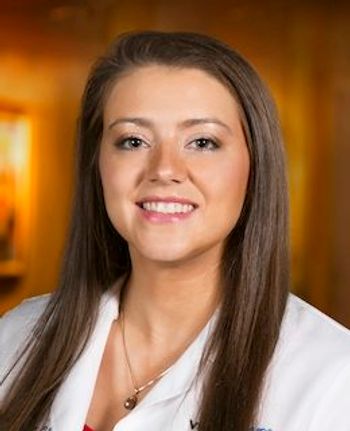
Refer to your optometric colleagues
It fills me with a sense of pride when I think about working with another physician to either complement the care of my patient or obtain services I cannot perform. Let’s face it, we are not capable of doing everything for our patients and thus we have to seek the guidance of those who are better at specific skills. We as a profession need to have our pulse on what other physicians are providing for our patients. This is the essence of comanaging our patient-it is not a financial agreement, it is a “what’s in your patients best interest” agreement.
It fills me with a sense of pride when I think about working with another physician to either complement the care of my patient or obtain services I cannot perform. Let’s face it, we are not capable of doing everything for our patients and thus we have to seek the guidance of those who are better at specific skills. We as a profession need to have our pulse on what other physicians are providing for our patients. This is the essence of comanaging our patient-it is not a financial agreement, it is a “what’s in your patients best interest” agreement.
A great example is non-FDA approved procedures that are in clinical trials, such as dry eye studies, contact lens studies, and new IOLs, to name a few. However, currently one clinical study can have a tremendous effect on your patients: corneal collagen cross-linking (CXL). The application of riboflavin to the stromal collagen creates a bond that stabilizes the structure of the cornea. Yet, when you refer, recommend, or simply tell your patient to get involved with this procedure, you are ‘creating a bond’ with your patient.
As a clinical investigator in the CXLUSA clinical trial, I can speak firsthand to the symbiotic relationship between optometrist and investigator. When a clinic is using the epi-on CXL technique, the patient experiences limited to no symptoms, and follow-up is strictly evaluating the change in topography and other metrics. Specifically speaking, any patient in your practice who has the potential for corneal irregularity will be an ideal candidate for CXL. As a practitioner involved in the refractive surgical arena, I have watched patients attempt to stabilize or improve the quality of their vision through LASIK or other refractive surgical procedures. However, patients with keratoconus or irregular corneas were not ideal candidates. The same was also noted with patients who had previously had radial keratometry (RK) and were attempting to relive the time that they were glasses- or contact-lens–free. These are the patients who should not wait for FDA approval, haggle with insurance, or hear about this procedure from anyone but their optometrist that they trust.
Comanage with an OD
The influx of new technology allows our patients to buy an e-ticket into Tomorrowland and be provided today with the happiest of all treatments. Yet, we don’t always think of this as a comanagement because the referring optometrist is not able, in most cases, to assist in the care. Au contraire, my learned optometric colleague. As in the example of CXL, our corneal dystrophy, post-refractive, keratoconic, and high myopic patients can have a life-altering change. These patients still will be wearing corrective lenses and require comprehensive eye care and evaluation of their ocular health. Similar to a patient who has a new toric IOL or partakes in a clinical trial for dry eye, the referring doctor is still involved. Frankly, referring doctors are often viewed as the true patient champions for their initiative and forward thinking.
This comanagement agreement is also extended to optometrists who refer their patients to other optometrists who can provide a service you do not. I never had a great desire to treat low vision or perform vision therapy. However, I respect those doctors who have the patience and desire to work with these patients. As in any arrangement, you should talk with your colleagues about how to best cooperatively manage the patient. Personally, I prefer to keep the patient in my practice for all health exams, and refer to the specialist (in this case the optometrist) for the treatment. This extends to any area of treatment you do not feel you want or are capable of managing. Seek out a colleague, check out her practice, and have a game plan in mind on to how to handle the patient’s care.
Using a current example, I recently read Dr. Kathy Mastrota’s article on Demodex and have watched Optometry Times’s video series on Demodex treatments and what we as optometrists can do to remove this nasty bug on our patients’ lids. This may be something you want to do-or better yet, prefer to refer to a colleague to exterminate your patients’ lids. Such a situation would be a comanaged relationship.
As optometrists, we pridefully hang the “primary care” moniker on ourselves. Nowhere can this be visible to the patient when you introduce her to a treatment, a new material, or a clinical trial that can benefit her or her family in the future.ODT
Newsletter
Want more insights like this? Subscribe to Optometry Times and get clinical pearls and practice tips delivered straight to your inbox.


















































.png)


